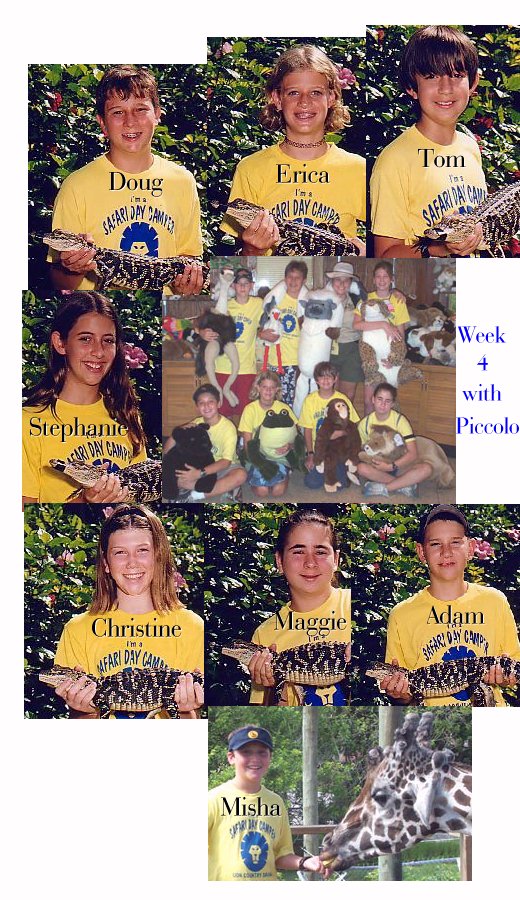













|


On Giraffe day we headed down to the Giraffe night pen and met up with Mark, a hoofstock keeper. We spend a few minutes talking about girafes. At LCS we have two baby giraffes born in Mary. While they are not twins, all the kids call them the twins. They are found in the nursery pen adjacent to the night pen. We got a good look at them later, and I think everyone will agree they are pretty cute. We talked about the giraffes like they ahve 7 vertebre, just like humans! And they can't just bend down to drink water, they actually have to splay their legs to reach it. It is pretty funny to watch. We then got a chance to feed Mort, a friendly handraised giraffe, bananas! Nothing like a slimy greenish-black tongue to start a morning off!
|

We met up with the bird keeper to learn more about our feathered friend the macaw. Macaws are pretty cool with a wonderful aray of colors in their beautiful feathers. As they get older their feathers get darker and richer. We looked closely at Arnold, a Scarlet Macaw, and Azul, a Blue and Gold. They are found in the rainforests and are knows as throwing everying to the ground as they eat. Well that is jus their job--they take everything from the top of the rainforest and drop it to the ground. That is how the rainforest stays so plentiful..along with other things. We also made enrichments for the birds. We put peanuts in a box, hidden among paper. I hear they really enjoyed them!
|

We met with Jen, a reptile keeper, along with Piccolo, a baby alligator. She talked to us a few minutes about alligators. They have yellow stripes on their bodies which fade as they get older. It helps the mom in keeping track of them. Occasionally an adult will have faint stripes left over, but it isn't all that common. They have a very powerful tail, with some cool features. Their eyes are pretty awesome. If a tree branch gets in the way, their eyes can pop into their head and remain protected. There is an empty socket made specificly for the eyes. They eyes also have a thin protective membrane that protects the eyes so they keep them open under water. And their noses also help them stay underwater. The nostrils close up underwater, keeping all the water out. Later on the preserive we caught a wild gator swimming by chimp islands. Pretty cool watching them swim in open water!
|

Group 8 met with the Primate Keepers at the Siamang Islands. We brought wiht us enrichments made the day before. We took Jello and put in peanuts and bananas and froze it. The keeper took it out to the islands and we watched the siamangs enjoy them as the keepers told us about the siamangs and being a keeper. The siamangs have these really cool throat sacks, that project a yelling sound that can be heard 2 miles away! In the wild it would help decided who was in who's territory and who rules supreme. It was occasionally hard to hear the keepers becasue they were so loud! But we learned that it is very important to keep track of all your animals as a keeper, that is the first job every day. Then you have to clean the islands and prepare the days food. It is a tough and dirty job, but very rewarding!
|
 On Asia day we headed out to the preserve to check out the animals from Asia. In particular we took a closer look at the animals that originated from Asia. They are mainly antelope like the blackbuck and Nilgai. But there are also some cool animals liek the Asiatic Water Buffalo. They have really long tounge and can actually lick their noses! Oh so cool. They spend most of their time in the water becasue they have no sweat glands and the water is the only way to cool them off.
On Asia day we headed out to the preserve to check out the animals from Asia. In particular we took a closer look at the animals that originated from Asia. They are mainly antelope like the blackbuck and Nilgai. But there are also some cool animals liek the Asiatic Water Buffalo. They have really long tounge and can actually lick their noses! Oh so cool. They spend most of their time in the water becasue they have no sweat glands and the water is the only way to cool them off. 
|
|